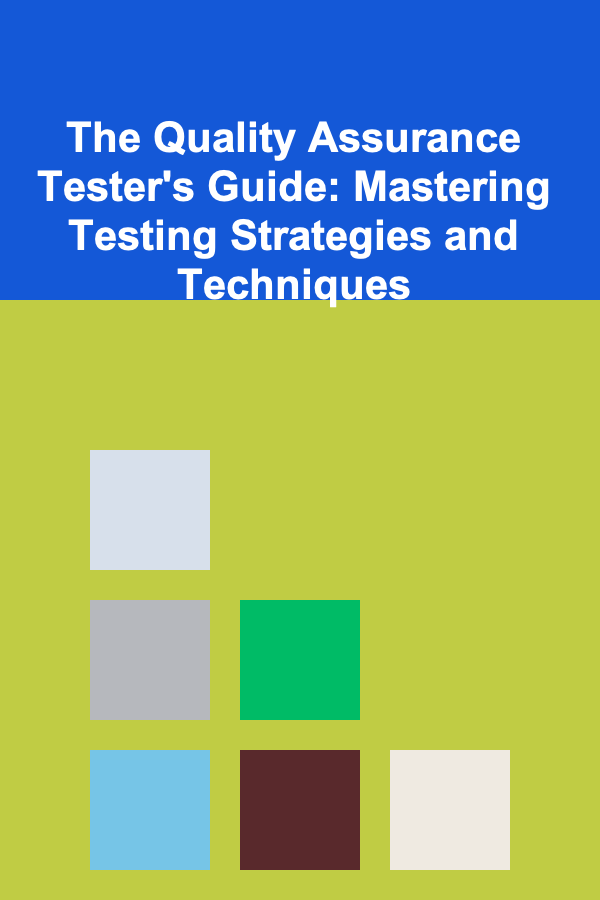
Building an Engaging Content Portfolio as a Content Editor
ebook include PDF & Audio bundle (Micro Guide)
$12.99$8.99
Limited Time Offer! Order within the next:

In today's highly competitive digital landscape, a content portfolio is one of the most crucial assets for any content editor. Whether you're just starting out or are an experienced editor looking to attract new clients or employers, an engaging portfolio can set you apart from others in the field. However, creating a portfolio that stands out requires more than simply compiling your work. It involves showcasing your skills, versatility, and understanding of the industry. In this actionable guide, we'll break down how to build a compelling content portfolio that highlights your strengths, boosts your credibility, and demonstrates your expertise.
Understanding the Purpose of a Content Portfolio
Before diving into the steps of building a portfolio, it's essential to understand its purpose. A content portfolio is more than a collection of past work; it's a marketing tool that serves several key functions:
- Showcases Your Skills: Potential clients or employers want to see evidence of your expertise. Your portfolio should demonstrate your ability to produce high-quality, engaging content that meets different goals.
- Demonstrates Your Range: A strong portfolio showcases your versatility. Whether you're editing blog posts, technical manuals, social media content, or eBooks, your portfolio should demonstrate that you're capable of working across various content types.
- Builds Trust: A well-organized portfolio gives credibility to your skills. It helps clients or employers trust that you can handle the work with professionalism and efficiency.
Key Questions to Consider When Building Your Portfolio:
- Who is your target audience (clients, agencies, companies)?
- What types of content do you most enjoy editing, and where can you showcase your passion?
- How can you highlight both your technical editing skills and your creative approach to content?
By answering these questions, you'll gain clarity on the kind of content to feature and how to best present yourself.
Curating Your Best Work
The first step in creating an engaging content portfolio is curating your best work. It's essential that your portfolio reflects the high standard of work you can provide, so choose your samples carefully.
2.1 Select High-Impact Projects
Rather than including everything you've worked on, focus on high-quality, impactful projects. Choose work that demonstrates your ability to:
- Improve Content Quality: Highlight projects where you improved the clarity, readability, or overall quality of the content.
- Meet Deadlines and Targets: If possible, showcase projects where you've worked under tight deadlines or with challenging requirements. This speaks to your reliability and organizational skills.
- Achieve Client Goals: Share projects where your editing helped meet client or business goals, such as increasing audience engagement, enhancing SEO performance, or driving conversions.
2.2 Showcase Diverse Content Types
A strong portfolio should reflect your ability to edit across various types of content. Depending on your niche, include examples from the following categories:
- Blog Posts & Articles: These are essential in many content editing roles and showcase your ability to handle long-form content.
- Web Content: Editing for websites requires knowledge of web structure, SEO optimization, and understanding of how to write for digital readers.
- Social Media Content: Highlighting your ability to create engaging, concise content for platforms like Instagram, Twitter, or LinkedIn is essential for editors who specialize in digital media.
- EBooks & White Papers: Long-form content, such as eBooks and white papers, shows your expertise in organizing complex ideas and delivering in-depth information.
- Technical Writing: If you're skilled in editing technical documents, user manuals, or instructional content, these are great additions to your portfolio.
By showcasing a broad range of content, you demonstrate that you can work across multiple formats and styles, which is highly attractive to potential employers or clients.
2.3 Highlight Specific Skills and Achievements
Your portfolio should also spotlight your specific skill set as a content editor. Consider including:
- Before and After Samples: Include both the original and edited versions of content to highlight the improvements you made, such as grammar fixes, improved structure, and better readability.
- SEO Optimization: If your editing involves SEO, include examples that demonstrate your ability to optimize content for search engines.
- Metrics and Results: Whenever possible, include measurable results. For example, you could say, "Edited blog post that increased traffic by 20%" or "Revised a technical manual that reduced customer complaints by 30%."
These types of additions will give prospective clients or employers concrete proof of your capabilities.
Organize Your Portfolio Effectively
A portfolio is only valuable if it's easy for your audience to navigate. Organization is key to ensuring that potential clients or employers can quickly understand your expertise and skills.
3.1 Categorize Your Work
Consider organizing your portfolio by content type or industry. For example:
- Content Type: Group your work into sections like blog posts, social media posts, web content, eBooks, and more.
- Industry: If you've worked in different industries (e.g., healthcare, technology, finance), create sections for each industry to highlight your specialized knowledge.
This helps demonstrate that you can work across various niches or that you're particularly skilled in a specific area.
3.2 Make it Easy to Navigate
Your portfolio should be easy to browse. A clear layout and intuitive structure will ensure visitors can quickly find the samples they're interested in. Include:
- Navigation Menus: Organize your content into logical sections and use a clean, easy-to-follow navigation bar.
- Search Functionality: If you have a lot of samples, including a search bar will help users quickly find the type of content they're looking for.
- Highlight Key Projects: Include a featured section for your most impressive or recent work, giving it extra visibility.
3.3 Personal Branding
Remember that your portfolio is a reflection of your personal brand. Use a clean, professional design that aligns with your identity as an editor. Consider:
- Customizing Your Website: If you're using a platform like WordPress or Wix, make sure to customize the design and layout to reflect your style.
- Professional Bio: Include a bio that highlights your experience, skills, and values as a content editor. Keep it concise but compelling.
- Contact Information: Make it easy for potential clients or employers to reach out to you. Include clear contact options, such as an email address, phone number, and social media profiles.
Add Testimonials and Client Feedback
Including testimonials from previous clients or employers can significantly enhance your portfolio. Positive feedback builds trust and adds credibility to your skills. Reach out to clients or colleagues who are willing to provide testimonials.
4.1 Crafting Effective Testimonials
- Ask for Specific Feedback: Instead of asking for a generic "good job" testimonial, request specific feedback about how you helped them with their content. For example: "Thanks to your edits, our website content became more engaging, leading to a 25% increase in page views."
- Include Client Logos: If you've worked with recognizable brands or reputable companies, include their logos alongside testimonials. This builds trust and validates your experience.
4.2 Client Case Studies
Another powerful way to demonstrate your editing skills is through case studies. A case study can provide an in-depth look at how your editing helped a particular project succeed. Focus on:
- Problem: What challenges did the content face before your involvement?
- Solution: How did your editing improve the content (structure, tone, SEO, etc.)?
- Results: What positive impact did your edits have on the final product (e.g., engagement, readability, client satisfaction)?
Stay Updated and Expand Your Portfolio
As the content landscape evolves, so should your portfolio. Keep it fresh by adding new samples, reflecting on your growth, and staying up to date with industry trends.
5.1 Continuously Improve Your Skills
- Stay Current with Trends: Keep learning about the latest trends in content creation, SEO, and content marketing. This knowledge will make you a more effective editor and allow you to expand your range.
- Experiment with New Formats: If you haven't already, consider experimenting with new formats like podcasts, video scripts, or interactive web content. This can diversify your portfolio and showcase your ability to work in different media.
5.2 Regularly Update Your Portfolio
Every few months, revisit your portfolio to add new content and remove outdated samples. As you gain more experience, your earlier work may no longer reflect the best of your abilities. Keep your portfolio dynamic by highlighting recent accomplishments and fresh projects.
Conclusion
Building an engaging content portfolio is an ongoing process that requires strategy, attention to detail, and a focus on presenting your best work. By curating a collection of high-quality content, organizing it effectively, and continuously updating it, you can create a portfolio that highlights your skills and attracts new opportunities. Remember, your portfolio is a reflection of your abilities and your professional brand, so invest time and effort into making it stand out. With a strong, well-organized portfolio, you'll be well-positioned to succeed as a content editor in the competitive world of digital media.

Building Your Personal Brand for Remote Job Search Success
Read More
How to Create More Space in Your Bedroom with Clever Storage Hacks
Read More
How to Organize Your Child's School Year Supplies
Read More
How to Reduce Food Waste to Zero
Read More
Making Money from Deep Learning through Online Courses
Read More
The Quality Assurance Tester's Guide: Mastering Testing Strategies and Techniques
Read MoreOther Products

Building Your Personal Brand for Remote Job Search Success
Read More
How to Create More Space in Your Bedroom with Clever Storage Hacks
Read More
How to Organize Your Child's School Year Supplies
Read More
How to Reduce Food Waste to Zero
Read More
Making Money from Deep Learning through Online Courses
Read More